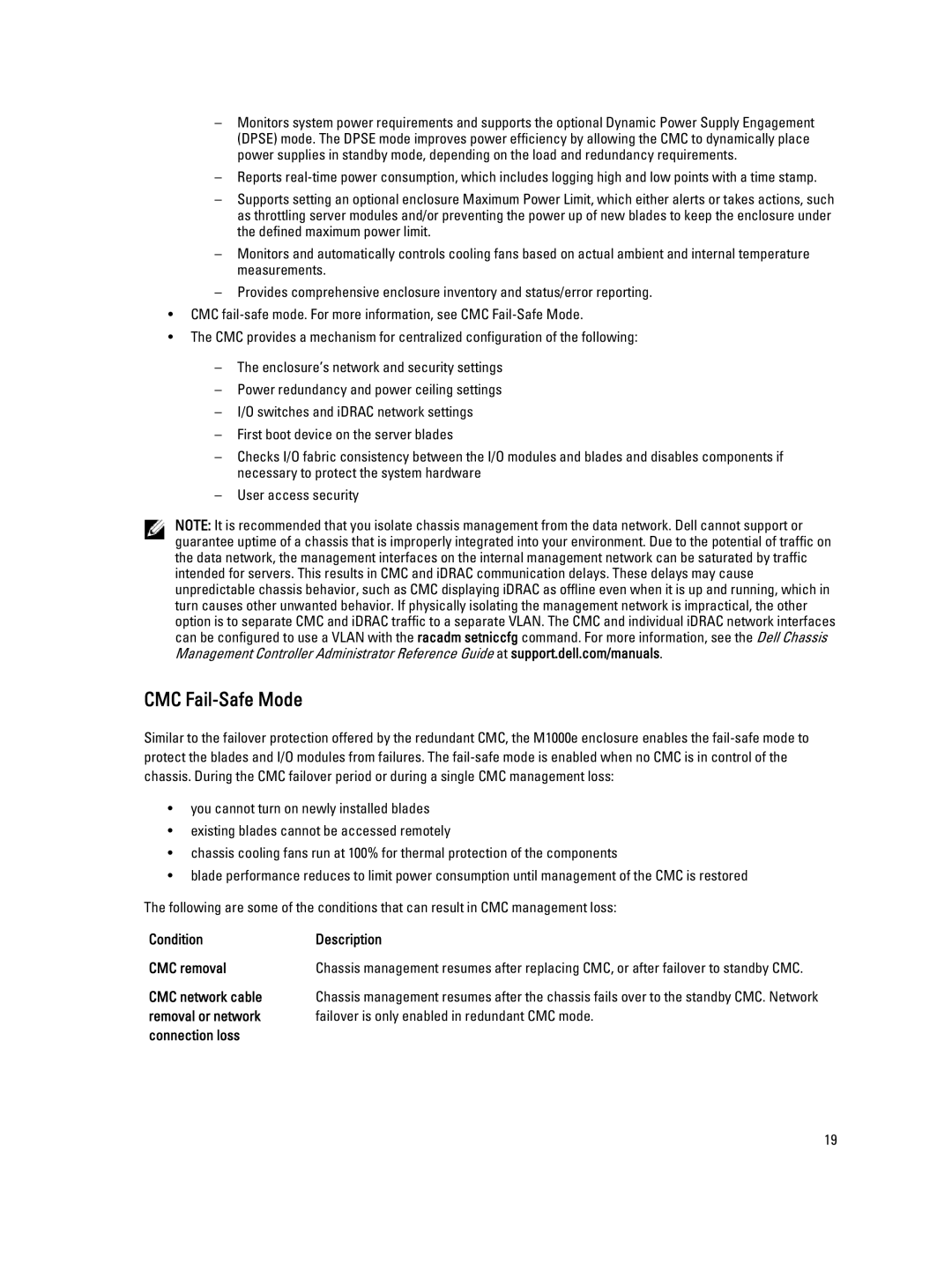–Monitors system power requirements and supports the optional Dynamic Power Supply Engagement (DPSE) mode. The DPSE mode improves power efficiency by allowing the CMC to dynamically place power supplies in standby mode, depending on the load and redundancy requirements.
–Reports
–Supports setting an optional enclosure Maximum Power Limit, which either alerts or takes actions, such as throttling server modules and/or preventing the power up of new blades to keep the enclosure under the defined maximum power limit.
–Monitors and automatically controls cooling fans based on actual ambient and internal temperature measurements.
–Provides comprehensive enclosure inventory and status/error reporting.
•CMC
•The CMC provides a mechanism for centralized configuration of the following:
–The enclosure’s network and security settings
–Power redundancy and power ceiling settings
–I/O switches and iDRAC network settings
–First boot device on the server blades
–Checks I/O fabric consistency between the I/O modules and blades and disables components if necessary to protect the system hardware
–User access security
NOTE: It is recommended that you isolate chassis management from the data network. Dell cannot support or guarantee uptime of a chassis that is improperly integrated into your environment. Due to the potential of traffic on the data network, the management interfaces on the internal management network can be saturated by traffic intended for servers. This results in CMC and iDRAC communication delays. These delays may cause unpredictable chassis behavior, such as CMC displaying iDRAC as offline even when it is up and running, which in turn causes other unwanted behavior. If physically isolating the management network is impractical, the other option is to separate CMC and iDRAC traffic to a separate VLAN. The CMC and individual iDRAC network interfaces can be configured to use a VLAN with the racadm setniccfg command. For more information, see the Dell Chassis Management Controller Administrator Reference Guide at support.dell.com/manuals.
CMC Fail-Safe Mode
Similar to the failover protection offered by the redundant CMC, the M1000e enclosure enables the
•you cannot turn on newly installed blades
•existing blades cannot be accessed remotely
•chassis cooling fans run at 100% for thermal protection of the components
•blade performance reduces to limit power consumption until management of the CMC is restored
The following are some of the conditions that can result in CMC management loss:
Condition | Description |
CMC removal | Chassis management resumes after replacing CMC, or after failover to standby CMC. |
CMC network cable | Chassis management resumes after the chassis fails over to the standby CMC. Network |
removal or network | failover is only enabled in redundant CMC mode. |
connection loss |
|
19
